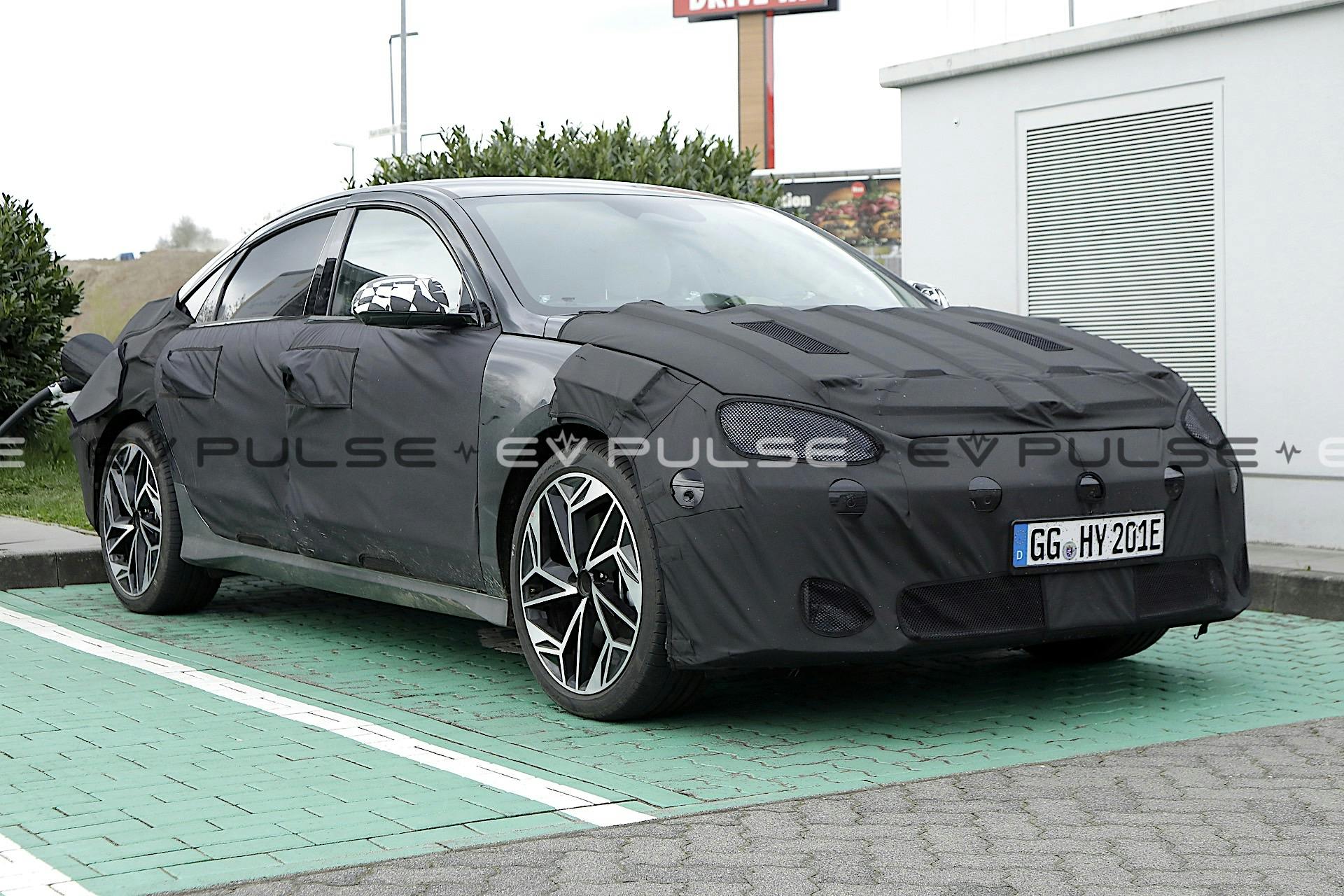Once again spy photographers have caught the Hyundai Ioniq 6 prototype, this time we see some production-spec details. The reflectors, for instance, are now what you’ll find in the final vehicle. Its biggest highlight is the taillight cluster, which is now a full-width design similar to what was in the Prophecy Concept. You also see the same pixel pattern from the Ioniq 5. Look through the mesh around the headlights and you’ll see projector LED headlights, hinting that this prototype is a more expensive trim.
There’s one other conspicuous detail on this particular Hyundai Ioniq 6 prototype: the wheel and tire combination it’s wearing. The car is on 20-inch alloy wheels wearing 245/40ZR20 performance tires, specifically the Pirelli P Zero, the same rubber used by the Hyundai Veloster N and Kona N. This suggests that Hyundai is positioning the Ioniq 6 as a sports sedan with varying degrees of performance levels. The prototype in these photos appears to be an N Line, which slots between the standard models and the full-fat N version.
Versus the Prophecy Concept, the production Ioniq 6 is smaller because it’s being positioned as a Tesla Model 3 fighter. Look closer at the spy shots and you’ll notice a shorter nose than the show car. The rear deck lid, on the other hand, is more pronounced giving it a more traditional sedan look. This specific example also appears to have a rear spoiler. However, don’t expect a true duckbill like in the concept. Despite the fast-descending roofline, the Ioniq 6 has a traditional trunk instead of a liftback-style hatch like the Kia Stinger.
Built on the Hyundai Motor Group’s E-GMP architecture, the Ioniq 6 follows the Ioniq 5 crossover. Instead of going retro, designers went all-in on flowing sheet metal that appears to have been informed by vehicles from the 1930s. Expect the final vehicle to be a little more restrained than the flamboyant Prophecy Concept. Like its crossover sibling, the Ioniq 6 should use the same 77.4-kWh lithium-ion battery. That should enable it to break the 300-mile mark on the standard variants.
The single-motor Ioniq 6 will generate the same 225 hp and 258 lb-ft of torque as the Ioniq 5. Dual-motor variants should make 320 hp and 446 lb-ft routed through all four wheels. The N Line model should follow the standard models and could get more power from its two electric motors. Expect it to be similar to what the Genesis GV60 makes at 429 hp and the same torque as the regular AWD model. It should also include a Boost function that will momentarily bump output to 483 hp and 516 lb-ft. Along with the power bump, the N Line version should also get some suspension, steering, and chassis tweaks plus performance rubber.
At the top will be Ioniq 6 N, which will borrow its powertrain components from the Kia EV6 GT. However, Hyundai’s N division will make several tweaks to the electric motors and other powertrain components. That should bump the car’s output to well over 500 hp and 500 lb-ft. Adjustable dampers, an electronically-controlled limited-slip differential, larger brake pads, and stickier tires are also in the cards.
Expect the Hyundai Ioniq 6 to debut this year as a 2023 model. It’s the second model in Hyundai’s all-electric sub brand and will be followed by the three-row Ioniq 7 based on the Seven Concept first shown at the 2021 Los Angeles Auto Show.

